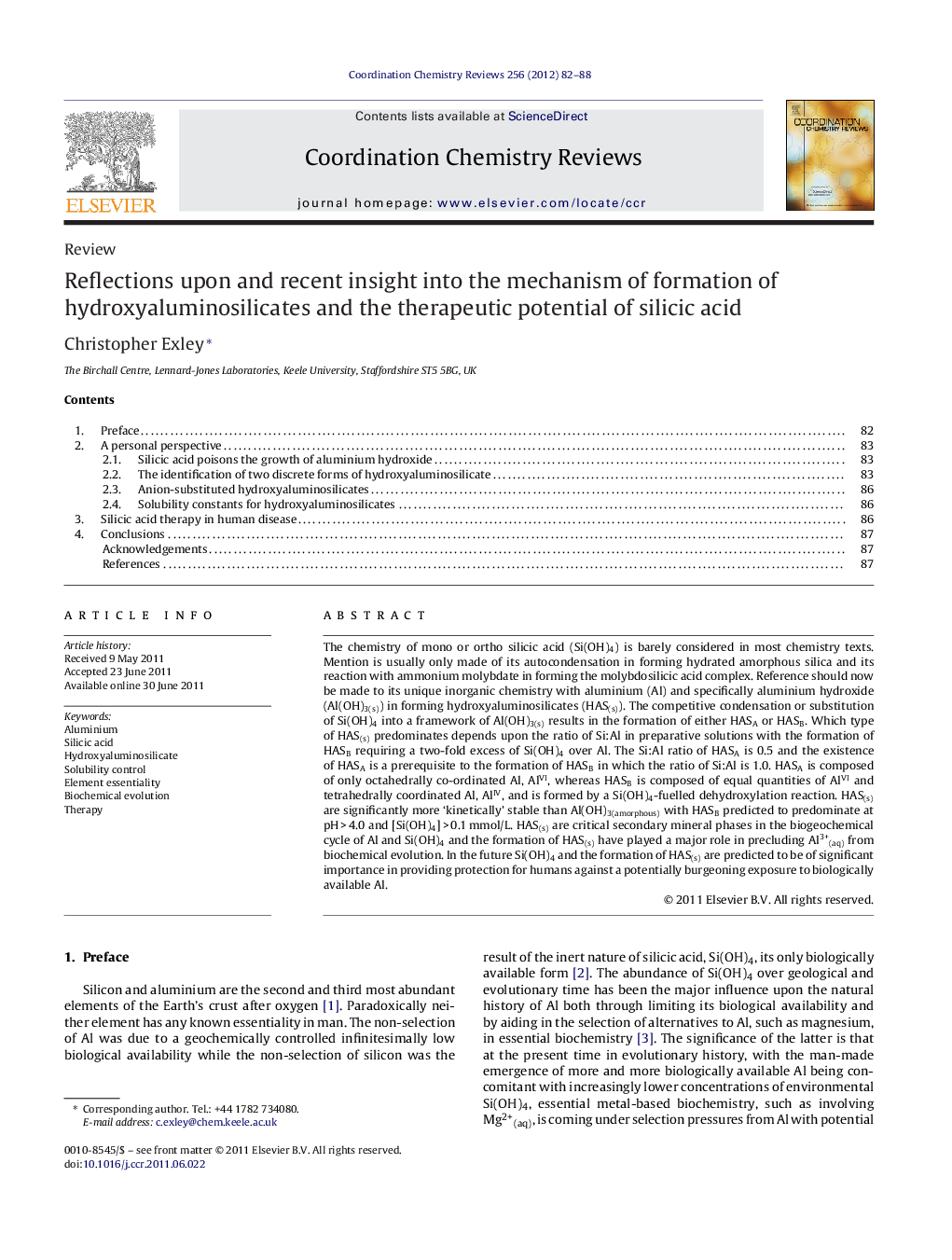| کد مقاله | کد نشریه | سال انتشار | مقاله انگلیسی | نسخه تمام متن |
|---|---|---|---|---|
| 1299133 | 1498775 | 2012 | 7 صفحه PDF | دانلود رایگان |

The chemistry of mono or ortho silicic acid (Si(OH)4) is barely considered in most chemistry texts. Mention is usually only made of its autocondensation in forming hydrated amorphous silica and its reaction with ammonium molybdate in forming the molybdosilicic acid complex. Reference should now be made to its unique inorganic chemistry with aluminium (Al) and specifically aluminium hydroxide (Al(OH)3(s)) in forming hydroxyaluminosilicates (HAS(s)). The competitive condensation or substitution of Si(OH)4 into a framework of Al(OH)3(s) results in the formation of either HASA or HASB. Which type of HAS(s) predominates depends upon the ratio of Si:Al in preparative solutions with the formation of HASB requiring a two-fold excess of Si(OH)4 over Al. The Si:Al ratio of HASA is 0.5 and the existence of HASA is a prerequisite to the formation of HASB in which the ratio of Si:Al is 1.0. HASA is composed of only octahedrally co-ordinated Al, AlVI, whereas HASB is composed of equal quantities of AlVI and tetrahedrally coordinated Al, AlIV, and is formed by a Si(OH)4-fuelled dehydroxylation reaction. HAS(s) are significantly more ‘kinetically’ stable than Al(OH)3(amorphous) with HASB predicted to predominate at pH > 4.0 and [Si(OH)4] > 0.1 mmol/L. HAS(s) are critical secondary mineral phases in the biogeochemical cycle of Al and Si(OH)4 and the formation of HAS(s) have played a major role in precluding Al3+(aq) from biochemical evolution. In the future Si(OH)4 and the formation of HAS(s) are predicted to be of significant importance in providing protection for humans against a potentially burgeoning exposure to biologically available Al.
Journal: Coordination Chemistry Reviews - Volume 256, Issues 1–2, January 2012, Pages 82–88